Trash Classification using Machine Vision for Household Settings
Trash Classification using Machine Vision for Household Settings
By Ashini Hasara Medagangoda
Abstract
The objective of the study conducted here is to evaluate whether it is feasible to develop a machine vision-based classification system to classify trash belonging into four selectively pre-determined distinct categories: glass, metal, organic waste and plastic. A dataset of over 2000 images was collected and trained by employing a vision-based algorithmic model- Convolutional Neural Network (CNN). On a set of 244 test images, the CNN, which was a fine-tuned VGG-19 model, obtained a final accuracy of 83.61%. A confusion matrix was employed for the output analysis to determine the correlation between correct and incorrect predictions with respect to the trash classes. The average speed taken to execute the prediction model per image was recorded as 0.32 seconds. The misclassified image instances were primarily observed to be due to a lack of feature distinguishability between similar objects across different classes (as a result of dataset limitations). Henceforth, the improvement of the generalizability of the prediction model to more varieties of new image data will be explored in future research by expanding the dataset and employing deeper neural networks (with higher combinations of hyperparameters). Expanding the prediction model to detect and classify multiple instances of trash items in a single scene and deploying a trash can with four detachable compartments are some other possible improvements mentioned in the future research work.
Download File
File Name: Trash Classification using Machine Vision for Household Settings
Size: 95.8 KB
Format: PDF
Browse By
© 2012-2019 ICBT Campus | Design by ICBT IT Team | ICBT All Rights Reserved.
Design by ICBT IT Team

